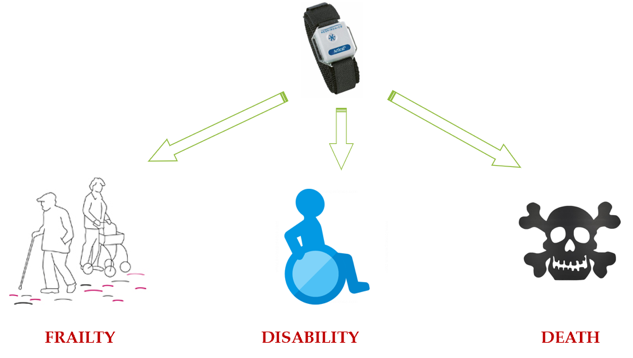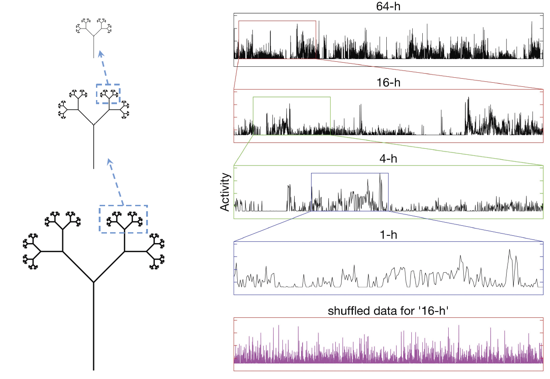Science Translational Medicine cover story - Predictive patterns in daily movement
Initially published on October 31, 2019 in the Harvard Open Scholar profile, which, as of today, is still live, but will eventually be down.

Credit © Medical Biodynamics Program
We observed temporal correlations across multiple scales in motor activity, and found their value in predicting frailty, disability, and death in older adults. Study was published in Science Translational Medicine on October 30, 2019. This paper was featured on cover page of this issue.

Credit © ASHLEY COOPER/SCIENCE SOURCE
Wearables render new opportunities to the clinic—unobtrusive monitoring in long term. Wrist actiwatch is now common in market.
What may these motor activity fluctuations tell us about health?
We are interested in the self-similarity hidden underneath the signal itself. Self-similarity, meaning structures mimic themselves across different observation scales, is also known as scale invariance or fractal.

Credit © Medical Biodynamics Program
Left: a fractal structure. Small scale structures resemble those on large scales.
Right: a temporal fractal process. Statistical self-affinity is observed on different time scales.
As a result of self-similarity or scale invariance, motor activity fluctuations possess strong temporal correlations in healthy, young adults. Aging or diseases are usually accompanied by a loss of the temporal correlations.
Would the change in temporal correlations tell us something about systemic health status in future?
Collaborating with Rush Alzheimer’s Disease Center, we recently examined motor activity data of over 1,000 elderly participants and followed their health for up to 13 years. We found that the loss of the temporal correlations in motor activity was associated with increased risk of frailty, disability, and all-cause death in future. These associations remain existed after adjusting for common health problems, chronic health conditions, cognition, mood, and physical activity etc., implying an independent role of this unique feature that plays in predicting health.